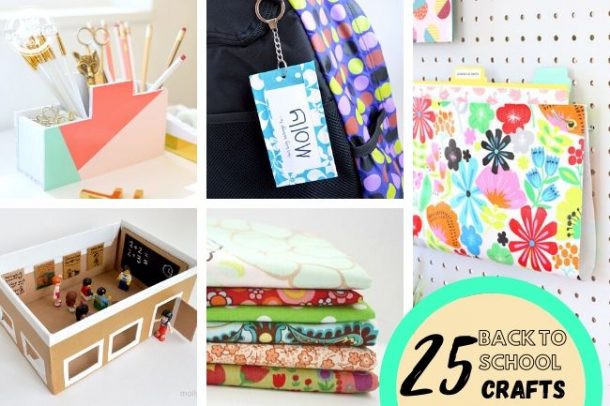
There are many options when it comes to black quilting fabric. There are many options for solids. However, you can also choose from many styles or prints. Black fabric is great for any occasion, such as Halloween or New Year's Eve. It can be used in everyday projects.
Robert Kaufmann: Amish Black
Robert Kaufmann's Amish Black is a classic, black quilting fabric that can be used for all kinds of projects. The manufacturer of this fabric, based in Lancaster County, Pennsylvania, supplies a variety of industries including the home decorating and apparel industries. Its reputation for excellent customer service and quality fabric makes it a popular choice with quilters. The company offers online ordering. You can pick up your order within 24 hours if you order online.
Essex Linen by Robert Kaufmann
Robert Kaufman fabrics offers light-weight linen blend fabrics that have a luxurious feel and full-bodied drape. These fabrics are great for making lightweight jackets, fuller and longer skirts, and heirloom fine linens. Blue chambray fabric comes with white and blue cross-threads.

This medium-weight fabric is a great choice for quilting. This fabric is a blend of 55% linen and 45 percent cotton. It is both soft and strong enough to be used in many quilting projects. Essex Linen can be machine washed and will naturally soften as it ages.
Robert Kaufmann makes Essex Linen from linen and cotton. It has a luxurious hand and full-bodied drape that makes it perfect for apparel, quilting, embroidery, and upholstery. Its natural color variation makes it an excellent choice for heirloom projects. It measures 44 in wide and weighs 5.6oz per square yard.
Voile at Belle Citadel
The name voile is an anagram of "I love." It is a beautiful fabric choice for your quilt. This fabric provides stability and doesn't hinder the quilt's movement. This fabric is great for string quilts. It also works well in quilting cotton.
Voile can be described as a lightweight fabric that is made from 100% cotton (or a mixture of cotton-polyester). It is much thinner than quilting cotton and has a higher thread count and tighter weave. It is also easier to work with and has lower WOF (weight on frame). This fabric is ideal for quilting as it blocks glare and provides a light feel.

Voile, a lightweight fabric, is great for summer sewing. It is made from 100% cotton with a higher thread count that most cotton fabrics. Because it's breathable and lightweight, voile can often be used as a substitute for a lining. Although it doesn't stretch as much as other cotton fabrics, voile drapes better than other fabrics. For sewing voile, a size 9 needle is best. Cotton embroidery thread also works well.
FAQ
What are collection hobbies?
Books, movies, music and comics are the most popular collections.
You can also collect anything from stamps to coins to cars to dolls to action figures to model kits to figurines to art supplies to tools to kitchen utensils to jewelry to watches to gadgets to clothes to furniture to antiques to...
I believe you get the idea.
How can I get started in my new hobby?
The first step toward starting any new hobby is to decide what kind of activity you'd like to pursue.
After you've decided on your subject, it is important to feel passionate about it.
It is important to know the reason you want to begin a hobby. This will help give you direction and provide a purpose.
Once you've decided what type of hobby you'd like to pursue, you can begin planning.
Consider the equipment that you will need.
You might need to consider whether you should attend classes or seminars.
Make sure that you have enough space in your home for your hobby.
A club or group might be something you consider. These groups offer support and advice.
The last thing you should do is think about how much money it would cost to pursue your hobby.
What is the cost of a hobby?
It costs nothing to start a hobby. It can take many years to accomplish what you desire if you are serious about it.
There is one thing that will help you. It's called 'passion.' If you have passion for whatever it is you do, you will find it easier to put in the hours required to make progress.
After you've put in hours, you might become addicted. This is where the real fun begins. Because you now enjoy what you do and are improving your skills every day. You'll probably see a substantial improvement by the end.
Do not worry about the time it takes. You can just try it. You may be surprised.
Why do we require hobbies?
Hobbies can be a part of your life because they provide you with time to unwind, recharge, think creatively as well as the chance to exercise, socialize, and relax. They also provide us with opportunities for learning new skills and developing valuable life-long interests.
Hobbies are a way to find meaning and purpose.
They are often a great way to spend free time when you don't have much else going on.
They are also very entertaining!
If you don’t make time for a hobby then it’s probably not worth your time.
Look at all the options. You might consider starting a hobby if you don't already have one.
What hobbies are best for introverts and what types of hobbies would they enjoy?
Introverts can concentrate on one thing at the same time. They like solitude activities such as reading and writing, listening to music and watching movies.
They also like to be alone. However, they do not enjoy socializing all day long. They are often bored when surrounded in people.
This is why introverts often choose hobbies that require them to be alone. They might enjoy reading, listening to music or taking photos, painting, writing poetry, and other such activities.
Some introverts prefer to live alone. This allows them to concentrate on their hobby and not be distracted.
Statistics
- The intensity of the dialogue partners' bond at the end of the forty-five-minute vulnerability interaction was rated as closer than the closest relationship in the lives of 30 percent of similar students. (time.com)
- Studies show that just six minutes of reading can reduce stress levels by 60 percent. (oberlo.com)
- A new survey by Pew Research Center of teens ages 13 to 17 finds that 36% of girls feel tense or nervous about their day every day; 23% of boys say the same. (pewresearch.org)
- The Role of the Mind in Sex, Dating, and Love: Men in the “humor” condition received phone numbers from 42.9% of the female participants and were refused 57.1% of the time. (time.com)
- In comparison, men in the “no humor” condition were refused 84.6% of the time and were only accepted 15.4% of the time. (time.com)
External Links
How To
How to begin gardening
Gardening is one the oldest forms. It requires patience, persistence and determination. The first step in starting your own garden is choosing a location where you want to grow food. It could be large land, or just your backyard. Next, select the kind of plants that are most appealing to you. Do you prefer flowers over vegetables? Some people love to grow herbs, while others enjoy raising animals like rabbits. Before you decide on the type of crops you want to plant, it is important to consider the space available. If you live in a region that experiences cold winters then it is possible to grow fruits and berries.
Once you have chosen what you will be planting, you must take some time to prepare your soil. How your plants perform is dependent on how well the soil you use. The soil should be rich in organic matter to provide nutrients for your plants' roots. Organic matter includes leaves, twigs (grass clippings), manure, compost, and manure. You need nutrients to your soil after you have prepared it. You will need different amounts of nutrients depending on which type of plants are being grown. Online fertilizer calculators can be used to determine these values. There are many fertilizers available so be sure to know what you are purchasing.
After preparing your soil and adding the proper nutrients, you now need to wait until your seeds germinate. The process can take between 2 and 3 months depending on how hot or cold it is in your region. Once the seeds have sprouted you will need to water them often. Too much or too little water can cause problems. Ensure you give your plants enough water at regular intervals and avoid overwatering. Overwatering your plants can lead to root disease and fungal infections. When watering your plants, remember that most plants require less water during the warm summer months than in winter. Remember that some plants require drying out after being watered. For example tomatoes should be kept slightly moist and not wet. Soggy soil is not a good choice for tomatoes. After the flowers have stopped, they must go into dormancy. Dormancy occurs when plants stop producing any new growth and start to store energy for the next harvest. Dormancy means that the plant stops communicating with its roots about producing food. During this period, plants continue to store energy. If temperatures fall below freezing or the plants are not getting enough sunlight, they will die.
You may be limited in what plants you can grow if you live in an urban area. Concrete sidewalks, roads, buildings and parking lots are all common in urban areas. These blocks block sunlight from reaching ground level. Concrete absorbs light, preventing the soil underneath from getting adequate sun exposure. Many plants can't thrive in urban environments because they lack sunlight. There are still plants that thrive in urban environments. Many trees, perennials, shrubs, as well as shrubs can be adapted to urban living. Many annuals can be grown indoors, too, in containers. Container gardens allow you to bring fresh greenery into your home year-round regardless of the weather outside.
You are now ready for planting!